|
|
|
 |
 |
 |
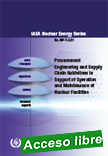 |
Procurement Engineering and Supply Chain Guidelines in Support of Operation and Maintenance of Nuclear Facilities
IAEA Nuclear Energy Series, 2016, 252 p.
Procurement must be effectively managed to ensure availability of design functions throughout a nuclear facility’s service life. Ineffective control of procurement process can jeopardize facility safety, reduce reliability, or can result in increased costs to operating organizations. This publication provides an overview of nuclear procurement processes, issues of special concern, and provides guidance for good practices to set up and manage a high-quality procurement organization. Lessons learned for organizations considering new build nuclear projects are also included. |
Extraído de: http://pub.iaea.org/books/IAEABooks/10865/Procurement-Engineering-and-Supply-Chain-Guidelines-in-Support-of-Operation-and-Maintenance-of-Nuclear-Facilities
|
 |
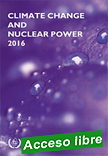 |
Climate Change and Nuclear Power 2016
IAEA Non-serial Publications, 2016, 98 p.
Climate change is one of the most important environmental challenges facing the world today. Nuclear power can make a significant contribution to reducing greenhouse gas (GHG) emissions while delivering energy in the increasingly large quantities needed for the socioeconomic well-being of a growing population. Nuclear power plants produce virtually no GHG emissions or air pollutants during their operation and only very low emissions over their entire life cycle. |
Nuclear power fosters energy supply security and industrial development by providing electricity reliably and at stable and predictable prices.
The accident at the Fukushima Daiichi nuclear power plant in March 2011 caused deep public anxiety and raised fundamental questions about the future of nuclear energy throughout the world. Yet, more than five years after the accident, it is clear that nuclear energy will remain an important option for many countries.
Its advantages in terms of climate change mitigation are an important reason why many countries intend to introduce nuclear power in the coming decades, or to expand existing programmes. All countries have the right to use nuclear technology for peaceful purposes, as well as the responsibility to do so safely and securely. The IAEA provides assistance and information to countries that wish to introduce nuclear power. It also provides information for broader audiences engaged in energy, environmental and economic policy making.
This publication provides a comprehensive review of the potential role of nuclear power in mitigating global climate change and its contribution to other economic, environmental and social sustainability challenges. The report also examines broader issues relevant to the climate change–nuclear energy nexus, such as costs, financing, safety, waste management and non-proliferation. Recent and future trends in the increasing share of renewables in overall electricity generation and its effect on nuclear power are also presented.
This edition substantially revises the 2015 edition. Most sections have been completely rewritten to account for new scientific information, analyses, technical reports and other publications that have become available since the last edition. Sections addressing issues on which the available information has not substantially changed over the past year have been omitted and are summarized in the Appendix. Interested readers are referred to the 2013, 2014 and 2015 editions for more detailed information on the impact of climate change on nuclear power, smart grids, nuclear energy applications beyond the power sector, the thorium
option, fast reactors, fusion, competition with shale gas, new developments in small modular reactors and the implications of lifetime extensions.
Extraído de: http://pub.iaea.org/MTCD/Publications/PDF/CCANP16web-86692468.pdf
|
 |
 |
Application of the Risk Matrix Method to Radiotherapy
IAEA TECDOC, 2016, 74 p.
The Fundamental Safety Principles (IAEA Safety Standards Series No. SF-1) and the
Radiation Protection and Safety of Radiation Sources: International Basic Safety Standards (IAEA Safety Standards Series No. GSR Part 3) establish requirements on the protection of patients who are subject to medical exposure. In accordance with these requirements, and in line with the IAEA’s responsibility to provide for the application of these standards, intensive work has been undertaken
|
on the prevention of accidental exposure in radiotherapy, which has taken the form of a series of TECDOCs on lessons learned from research into very serious incidents and teaching materials arranged into regional courses, which are accessible on the
IAEA’s Radiation Protection of Patients web site. These lessons learned, while necessary, are not sufficient; information continues to be received concerning new types of accidental exposure, and there may be other types about which no reports have been published.
A more anticipatory approach is required that, in a systematic, exhaustive and structured way, attempts to pre-empt other errors that might occur so as to prevent them or detect them early on. One such approach is the risk matrix method which, being relatively simple, can be applied to any radiotherapy service. This is the focus of the present study, undertaken as part of the Extrabudgetary Programme on Nuclear and Radiation Safety and Security in IberoAmerica.
Extraído de: http://pub.iaea.org/MTCD/Publications/PDF/TE1685Eweb.pdf
|
 |
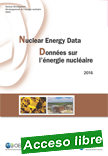 |
Nuclear Energy Data is the Nuclear Energy Agency's annual compilation of statistics and country reports documenting nuclear power status in NEA member countries and in the OECD area. Information provided by governments includes statistics on installed generating capacity, total electricity produced by all sources and by nuclear power, nuclear energy policies and fuel cycle developments, as well as projections of nuclear generating capacity and electricity production to 2035, where available.
|
Total electricity generation at nuclear power plants and the share of electricity production from nuclear power plants increased slightly in 2015, by 0.2% and 0.1%, respectively. Two new units were connected to the grid in 2015, in Russia and Korea; two reactors returned to operation in Japan under the new regulatory regime; and seven reactors were officially shut down – five in Japan, one in Germany and one in the United Kingdom.
Extraído de: http://www.oecd-nea.org/pub/
|
 |
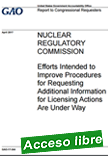 |
Nuclear Regulatory Commission: Efforts Intended to Improve Procedures for Requesting Additional Information for Licensing Actions Are Under Way
GAO-17-344, April 25, 2017, 27 p.
NRC issues RAIs to obtain information in licensing requests to ensure that officials can make a fully informed, technically correct, and legally defensible regulatory decision. RAIs are necessary when the information was not included in an applicant’s initial submission, is not contained in any other docketed correspondence, or cannot reasonably be inferred from the information available to agency staff. |
NRC’s use of RAIs has come under scrutiny in the past. For example, NRC's Inspector General, in a 2015 report, cited concerns about RAIs, including the amount of time it took to complete the RAI process and the resources required to do so.
GAO was asked to review how NRC uses RAIs. This report examines (1) NRC’s guidance for developing and issuing RAIs and how it differs across offices; (2) how many RAIs NRC has issued over the past 5 years and the kinds of activities that elicit RAIs; and (3) strengths and weaknesses of NRC’s processes to develop RAIs identified by NRC and licensees and the actions NRC is taking to address concerns. GAO examined agency guidance documents and selected licensing actions containing RAIs. GAO interviewed NRC officials and selected licensees. GAO randomly selected licensing actions and licensees from a sample of recent licensing actions that included cases from each of NRC’s RAI-issuing offices.
Extraído de: http://www.gao.gov/assets/690/684263.pdf
Fast Facts: http://www.gao.gov/products/GAO-17-344
Highlights: http://www.gao.gov/assets/690/684263.pdf
Report: http://www.gao.gov/assets/690/684262.pdf
|
 |
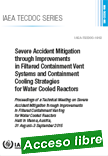
|
Severe Accident Mitigation through Improvements in Filtered Containment Vent Systems and Containment Cooling Strategies for Water Cooled Reactors - Proceedings of a Technical Meeting on Severe Accident Mitigation through Improvements in Filtered Containment Venting for Water Cooled Reactors Held in Vienna, Austria, 31 August–3 September 2015
IAEA TECDOC, 2017, 270 p.
One of the most important lessons from the accident at the Fukushima Daiichi nuclear power plant is that a reliable containment venting system can be crucial for effective accident management during severe accidents, especially for smaller volume containments in relation to the rated nuclear power. |
Containment venting can enhance the capability to maintain core cooling and containment integrity as well as reduce uncontrolled radioactive releases to the environment if the venting system has a filtration capacity. In general, a filtered containment vent system increases the flexibility of plant personnel in coping with unforeseen events. This publication provides the overview of the current status of related activities with the goal to share information between Member States on actions, upgrades, and new technologies pertaining to containment cooling and venting.
Extraído de: http://pub.iaea.org/books/IAEABooks/11190/Severe-Accident-Mitigation-through-Improvements-in-Filtered-Containment-Vent-Systems-and-Containment-Cooling-Strategies-for-Water-Cooled-Rea
|
 |
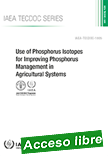 |
Use of Phosphorus Isotopes for Improving Phosphorus Management in Agricultural Systems
IAEA TECDOC, 2016, 110 p.
Phosphorus (P) is an essential element in plant, human and animal nutrition. Soils with low levels of P are widespread in many regions of the world, and their P deficiency limits plant growth and reduces crop production and food quality. External P inputs such as manufactured P fertilizers, organic P sources (crop residues and animal manures) and rock phosphates can be applied to ameliorate this low soil P availability to plants.
|
However, the extent of their availability is governed by complex physicochemical processes such as P adsorption to/desorption from colloidal soil particles; biological processes driven by soil microorganisms that influence the decomposition of soil organic matter and added animal manures; and other processes occurring in the root–soil interface (rhizosphere) that determine P acquisition by plants. Thus, it is of great importance to understand the various cycling processes that determine P fluxes and dynamics in soil–plant systems and ultimately influence the extent of P availability to plants. Isotopes can be used to unravel the main factors that influence these fluxes so that appropriate soil, plant and fertilizer management practices can be put in place to enhance the efficient use of soil P and added external P inputs. On the other hand, in intensively cultivated areas the continuous use of external P inputs can lead to its accumulation in the topsoil, and to increased pollution risks and eutrophication of water
bodies if such accumulated P finds its way into streams and rivers. In these cases, these science based management practices would also help to minimize the adverse effects of surplus P and potential losses to the environment.
The purpose of this publication is to provide comprehensive and up to date information on several topics related to P in soil–plant systems, in agricultural systems and in the environment. It presents the theoretical background as well as practical information on how to use nuclear and radioisotope tracer techniques in both laboratory and greenhouse experiments to assess soil P forms and plant-available soil P pools, and to understand P cycling processes in soil–plant systems. The publication focuses on practical applications of radiotracer techniques and can serve as a resource for research projects on improving sustainable P management in agricultural systems and as practical guidance on the use of phosphate isotopes in soil–plant research.
Extraído de: http://pub.iaea.org/MTCD/Publications/PDF/TE1805web.pdf
|
 |
 |
Nuclear Regulatory Commission: Regulatory Fee-Setting Calculations Need Greater Transparency
Government Accountability Office (GAO), March 2, 2017, 44 p..
From 2005 to early 2010, NRC expected an increase in workload due to a projected large number of applications for new nuclear power plants, among other things, and received increased budget authority and hired additional staff. NRC is required by law to collect about 90 percent of its annual appropriation by assessing fees to the commercial nuclear industry it regulates, and as NRC’s budget authority increased, so did its regulatory fees. |
By 2011, however, it had become clear that the projected growth had not materialized.
NRC’s budget and its regulatory fees, however, have declined little since 2010, and many licensees are confused by the process by which NRC sets its regulatory user fees. GAO was asked to review NRC’s feesetting process. This report examines, among other things, the extent to which NRC explained its fee calculations in its fiscal year 2016 fee documentation, and challenges industry stakeholders have identified with NRC’s fee-setting process. GAO reviewed NRC’s fee rules and work papers, interviewed NRC staff and 13 industry stakeholders, and evaluated NRC’s actions relative to criteria on issuing regulations and measuring performance.
Extraído de: http://www.gao.gov/assets/690/682454.pdf
Highlights: http://www.gao.gov/assets/690/682454.pdf
Report: http://www.gao.gov/products/GAO-17-232
|
 |
|
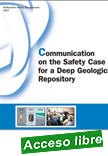
|
Communication on the Safety Case for a Deep Geological Repository
Nuclear Energy Agency (NEA), 20/02/17, 87 p.
Communication has a specific role to play in the development of deep geological repositories. Building trust with the stakeholders involved in this process, particularly within the local community, is key for effective communication between the authorities and the public. There are also clear benefits to having technical experts hone their communication skills and having communication experts integrated into the development process.
|
This report has compiled lessons from both failures and successes in communicating technical information to non-technical audiences. It addresses two key questions in particular: what is the experience base concerning the effectiveness or non-effectiveness of different tools for communicating safety case results to a non-technical audience and how can communication based on this experience be improved and included into a safety case development effort from the beginning?
Extraído de: http://www.oecd-nea.org/tools/publication?query=&div=&lang=&period=6m&sort=title&filter=1#p7336
|
 |
 |
Safety Aspects of Nuclear Power Plants in Human Induced External Events: General Considerations
IAEA Safety Reports, 2017, 88 p.
This publication gives the general roadmap on how to perform the design and evaluation of the protection of nuclear power plants against human induced external hazards, consistent with IAEA Safety Standards. The publication concentrates on an overall view of the methodology and on the important considerations for its application to existing and new nuclear power plants.
|
Topics covered include elements of the design/evaluation approach, developed in five phases: event identification; load characterization; design and assessment approaches; plant performance assessment and acceptance criteria; and operator response. The publication provides an approach to the assessment of extreme human induced external events which is fully consistent with the methods used for evaluation of nuclear facilities subjected to extreme natural events, such as earthquakes and floods.
Extraído de: http://pub.iaea.org/books/IAEABooks/10913/Safety-Aspects-of-Nuclear-Power-Plants-in-Human-Induced-External-Events-General-Considerations
|
 |
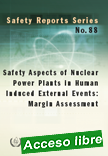 |
Safety Aspects of Nuclear Power Plants in Human Induced External Events: Margin Assessment
IAEA Safety Reports Series, 2017, 102 p.
This publication describes the procedures for calculating the margins of nuclear power plants in relation to human induced external hazards. It focuses on plant and systems performance evaluations. A two level approach for margin assessment is provided. The first level consists of a deterministic procedure in which, for each scenario, the existence of at least one undamaged success path to comply with the fundamental safety function is investigated.
|
This procedure can be subsequently extended to calculate probability measures such as conditional core damage probability and the conditional probability of spent fuel damage. In the most elaborated stage, probabilistic safety assessment (PSA) techniques are introduced, giving consideration to the probabilistic aspects of the hazards and of the capacity of structures, systems and components (fragility). Event tree and fault tree models are used to compute PSA metrics, such as core damage frequency, large-early release frequency and frequency of spent fuel damage.
Extraído de:http://pub.iaea.org/books/IAEABooks/10914/Safety-Aspects-of-Nuclear-Power-Plants-in-Human-Induced-External-Events-Margin-Assessment
|
 |
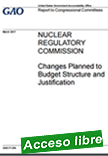 |
Nuclear Regulatory Commission: Changes Planned to Budget Structure and Justification
Government Accountability Office (GAO - US), March 8, 2017, 32 p.
NRC is an independent agency that regulates civilian uses of nuclear materials in the United States. From fiscal years 2005 to 2010, NRC’s budget and workforce increased by about 59 percent and about 27 percent, respectively, in anticipation of growth in the commercial nuclear industry.
|
When this growth did not occur, NRC made plans to reduce its budget and workforce. However, Congress and licensees—the companies regulated by NRC—have expressed confusion about the annual budget request for NRC, and they say they cannot determine specifically how NRC plans to spend its appropriations.
The explanatory statement accompanying the Consolidated Appropriations Act, 2016, included a provision for GAO to review NRC’s budget formulation process. This report examines (1) how NRC formulates its budget and how its budget structure changed for fiscal years 2010 through 2017 and (2) the extent to which NRC's budget justification aligns with its budget execution and reflects the agency's use of funds for prior years.
GAO reviewed NRC documentation, interviewed NRC and Office of Management and Budget staff, and interviewed a nongeneralizable sample of 13 industry stakeholders and 1 nonindustry stakeholder. GAO also analyzed NRC budget and obligation data to assess trends from fiscal years 2010 through 2015.
.
Extraído de: http://www.gao.gov/assets/690/683239.pdf
Highlights: http://www.gao.gov/assets/690/683240.pdf
Report: http://www.gao.gov/products/GAO-17-294
|
 |
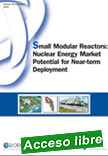 |
Small Modular Reactors - Nuclear Energy Market Potential for Near-term Deployment
Nuclear Energy Agency (NEA), 22/09/16, 73 p.
Recent interest in small modular reactors (SMRs) is being driven by a desire to reduce the total capital costs associated with nuclear power plants and to provide power to small grid systems. According to estimates available today, if all the competitive advantages of SMRs were realised, including serial production, optimised supply chains and smaller financing
|
costs, SMRs could be expected to have lower absolute and specific (per-kWe) construction costs than large reactors. Although the economic parameters of SMRs are not yet fully determined, a potential market exists for this technology, particularly in energy mixes with large shares of renewables.
This report assesses the size of the market for SMRs that are currently being developed and that have the potential to broaden the ways of deploying nuclear power in different parts of the world. The study focuses on light water SMRs that are expected to be constructed in the coming decades and that strongly rely on serial, factory-based production of reactor modules. In a high-case scenario, up to 21 GWe of SMRs could be added globally by 2035, representing approximately 3% of total installed nuclear capacity.
.
Extraído de: http://www.oecd-nea.org/tools/publication?query=&div=&lang=&period=6m&sort=title&filter=1#p7213
|
 |
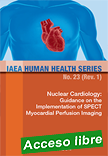 |
Nuclear Cardiology: Guidance on the Implementation of SPECT Myocardial Perfusion Imaging
IAEA Human Health Series, 2016, 101 p.
Nuclear cardiology is one of the most widely used non-invasive techniques for the assessment of coronary artery disease and other cardiovascular conditions. It has proved to be a cost effective tool for the evaluation and management of cardiac patients and usually has a decisive role for diagnosis, prognosis and risk stratification.
|
In particular, radionuclide myocardial perfusion imaging (MPI) is used extensively worldwide for the evaluation of known or suspected coronary artery disease, with an estimated 15–20 million procedures performed annually. This publication provides a detailed analysis of all the steps involved in the delivery of nuclear cardiology services, from referrals to reporting, and is intended to serve as guidance for the implementation, homogenization and enhancement of MPI practice in those Member States where the technique is under development.
.
Extraído de: http://pub.iaea.org/books/IAEABooks/11076/Nuclear-Cardiology-Guidance-on-the-Implementation-of-SPECT-Myocardial-Perfusion-Imaging |
 |
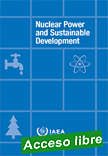 |
Nuclear Power and Sustainable Development
IAEA Non-serial Publications, 2016, 116 p.
Transforming the energy system is at the core of the dedicated sustainable development goal on energy within the new United Nations development agenda. This publication explores the possible contribution of nuclear energy to addressing the issues of sustainable development through a large selection of indicators.
|
It reviews the characteristics of nuclear power in comparison with alternative sources of electricity supply, according to economic, social and environmental pillars of sustainability. The findings summarized in this publication will help the reader to consider, or reconsider, the contribution that can be made by the development and operation of nuclear power plants in contributing to more sustainable energy systems.
Extraído de: http://pub.iaea.org/books/IAEABooks/11084/Nuclear-Power-and-Sustainable-Development |
 |
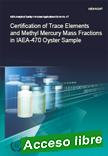 |
Certification of Trace Elements and Methyl Mercury Mass Fractions in IAEA-470 Oyster Sample
IAEA Analytical Quality in Nuclear Applications, 2016, 66 p.
The publication describes the production of the IAEA-470 certified reference material, which was produced following ISO Guide 34:2009, General Requirements for the Competence of Reference Material Producers. A sample of approximately 10 kg of dried oysters was taken from oysters collected, dissected and freeze-dried by the Corean Ocean Research and Development
|
Institute, and was further processed at the IAEA Environment Laboratories to produce a certified reference material. The sample contained certified mass fractions for arsenic, cadmium, calcium, chromium, cobalt, copper, iron, lead, magnesium, manganese, mercury, methyl mercure, rubidium, selenium, silver, sodium, strontium, vanadium and zinc. The produced vials containing the processed oysters sample were carefully capped and stored for further certification studies.
Extraído de: http://pub.iaea.org/books/IAEABooks/11101/Certification-of-Trace-Elements-and-Methyl-Mercury-Mass-Fractions-in-IAEA-470-Oyster-Sample |
| |
| |
|
|
| |
| |
|
|
| |
| |
|
|
| |
| |
|
|
|
|
|
|
|
